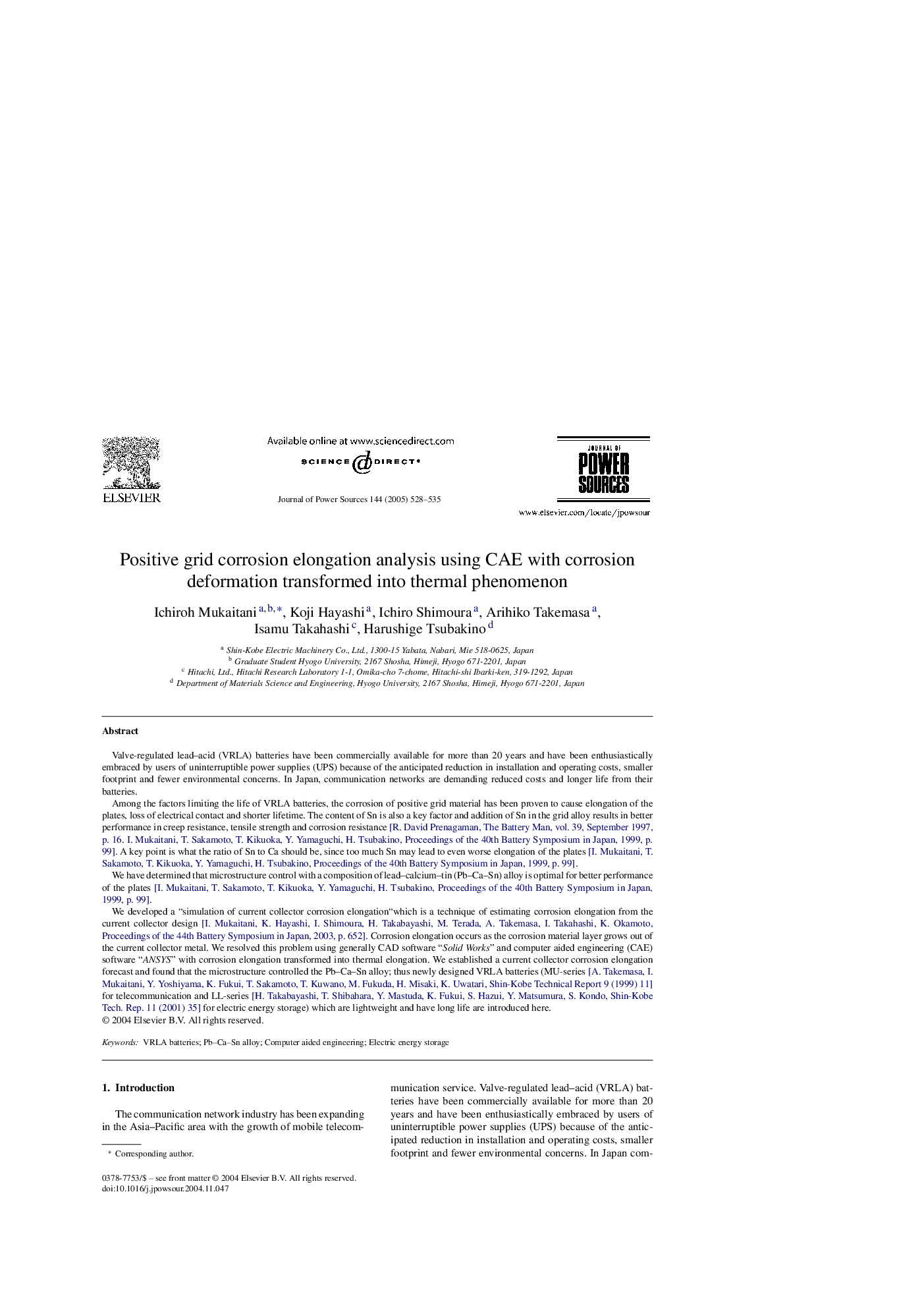| Article ID | Journal | Published Year | Pages | File Type |
|---|---|---|---|---|
| 10568081 | Journal of Power Sources | 2005 | 8 Pages |
Abstract
We developed a “simulation of current collector corrosion elongation“ which is a technique of estimating corrosion elongation from the current collector design [I. Mukaitani, K. Hayashi, I. Shimoura, H. Takabayashi, M. Terada, A. Takemasa, I. Takahashi, K. Okamoto, Proceedings of the 44th Battery Symposium in Japan, 2003, p. 652]. Corrosion elongation occurs as the corrosion material layer grows out of the current collector metal. We resolved this problem using generally CAD software “Solid Works” and computer aided engineering (CAE) software “ANSYS” with corrosion elongation transformed into thermal elongation. We established a current collector corrosion elongation forecast and found that the microstructure controlled the Pb-Ca-Sn alloy; thus newly designed VRLA batteries (MU-series [A. Takemasa, I. Mukaitani, Y. Yoshiyama, K. Fukui, T. Sakamoto, T. Kuwano, M. Fukuda, H. Misaki, K. Uwatari, Shin-Kobe Technical Report 9 (1999) 11] for telecommunication and LL-series [H. Takabayashi, T. Shibahara, Y. Mastuda, K. Fukui, S. Hazui, Y. Matsumura, S. Kondo, Shin-Kobe Tech. Rep. 11 (2001) 35] for electric energy storage) which are lightweight and have long life are introduced here.
Related Topics
Physical Sciences and Engineering
Chemistry
Electrochemistry
Authors
Ichiroh Mukaitani, Koji Hayashi, Ichiro Shimoura, Arihiko Takemasa, Isamu Takahashi, Harushige Tsubakino,
